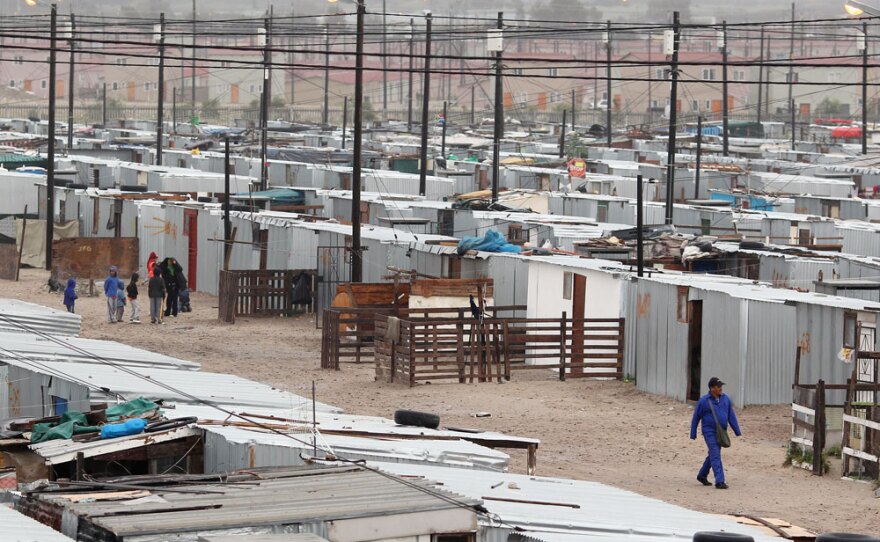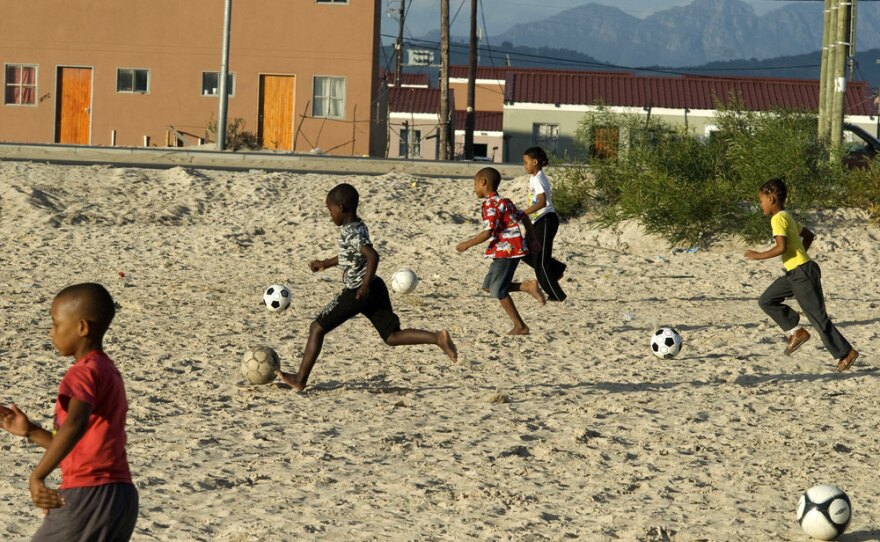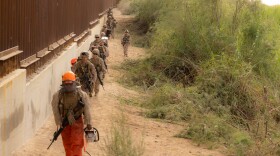As Friday's kickoff to the 2010 World Cup approaches, some of South Africa's host cities are going to great lengths to clean up their images.
After all, the four-week, 32-team tournament is expected to draw more than 300,000 international soccer fans and the attention of a global television audience.
Just a few blocks from Cape Town's new Green Point soccer stadium is Sea Point, where high-rise hotels stand atop old stone walls at the ocean's edge. Families and tourists stroll through the area's grassy waterfront parks.
It is beautiful, and that's partly because of what visitors don't see: dozens of homeless people who normally live in the area.
Ahead of the matches, Cape Town police have been arresting homeless people who live there and, in some cases, relocating them to the outskirts of the city.
Shane Raymond is a homeless man who eats at a nearby soup kitchen.

"There are people that I have known who are no longer in circulation. And there's this little area just outside of Cape Town near the airport that they call Blikkiesdorp, and that is where they are moving these people to," Raymond says.
Life In 'Tin Can City'
Blikkiesdorp is about 45 minutes outside Cape Town. The name is Afrikaans for "Tin Can City," and it's easy to see how it got the name -- there are hundreds of identical metal shanties laid out in perfect rows. Children and dogs run through the area's maze of gravel roads.
About 300,000 families in Cape Town are awaiting government homes, and Blikkiesdorp is supposed to provide temporary shelter for many of them.
But most people there are never issued a home elsewhere. Natasha Flor says she lived in a field near Green Point stadium for 14 years before a social worker brought her to Blikkiesdorp.
"I ended up here when that lady, she just come and throw us here, because she is a social worker in Green Point for [those of us who are] outside, and then she just dropped us here," Flor says.
Gavin Brooks and his three children were brought to Blikkiesdorp from Sea Point. He says he was told he couldn't stay where he was and that the government had a better place for them to live, but that they would have to live in Blikkiesdorp for three to five years.
"We feel like we are thrown away here, like the government is just throwing us away. It's like a dump," Brooks says.
We feel like we are thrown away here, like the government is just throwing us away. It's like a dump.
No Coercion, Official Says
Cape Town officials deny that anyone has been moved to Blikkiesdorp against their will. Hassan Khan is on the board of the City Improvement District -- the organization responsible for cleaning up Cape Town's streets -- and he also directs the Haven, a night shelter for homeless people.
"I think there's a misunderstanding here. It is quite possible that those people ... didn't think that they had any other choice of housing than going to Blikkiesdorp. But if the implication is that they were forced there, then I would have to say that that's not possible in a democratic country," Khan says.
South Africa wants to present itself as a top tourist destination to World Cup fans, and ridding the streets of homeless people seems to be an important part of the preparations in many of the nine cities hosting matches.
In Johannesburg, one official bluntly acknowledged the city's intention to chase away homeless people, saying, "You have to clean your house before you have guests."
More than 800 people in Johannesburg have been arrested or relocated, according to local reports, and similar actions are reportedly taking place in Rustenburg and Durban.
In a country where the forced removal of millions of black people during apartheid is still a recent memory, the relocations are especially controversial.
Opportunity 'To Be A Part Of The World Cup'
In Cape Town's central business district, John Philmon, a pastor, runs a soup kitchen that is filled with homeless people. Some have stayed in the city, and some have returned from places like Blikkiesdorp.
As the meal ends, a group begins to sing and dance. People at the soup kitchen are excited about the World Cup.
Those who have remained in the city will be safe -- and out of sight. The City Improvement District has provided them with televisions, so they can watch the games.
Philmon, who is known as "Pastor John," says he hopes the opportunity to see the games is an attractive lure.
"Because the problem that we had in the past with big events is the homeless people were always excluded, and they were not allowed ... on the premises or near the places where these big events take place. But now we've created an opportunity for them also to be part of the World Cup," he says.
Copyright 2022 NPR. To see more, visit https://www.npr.org. 9(MDAzMjM2NDYzMDEyMzc1Njk5NjAxNzY3OQ001))






